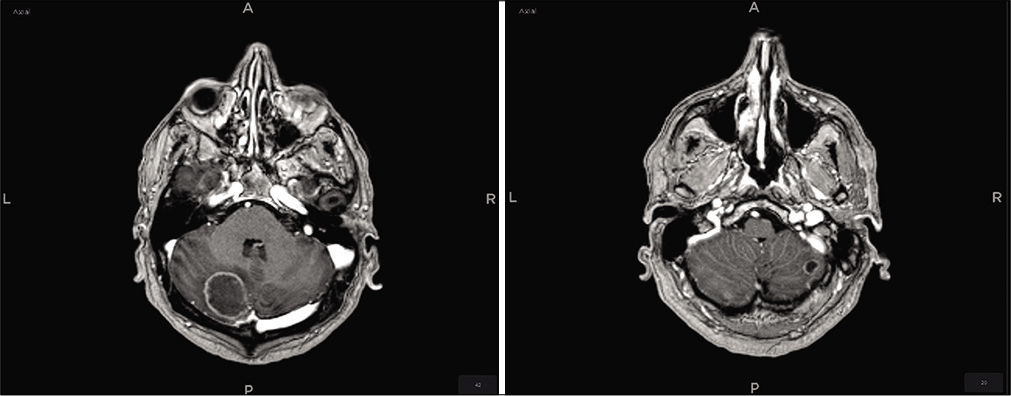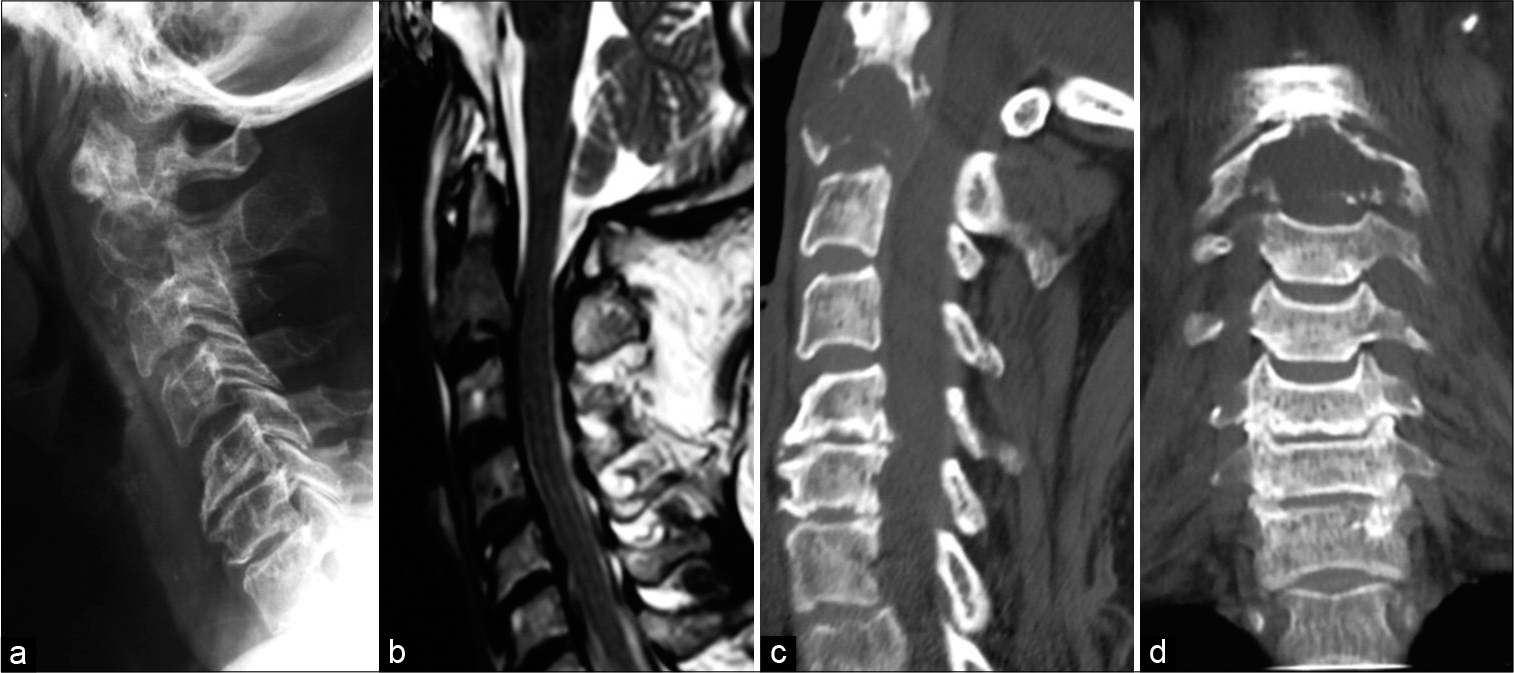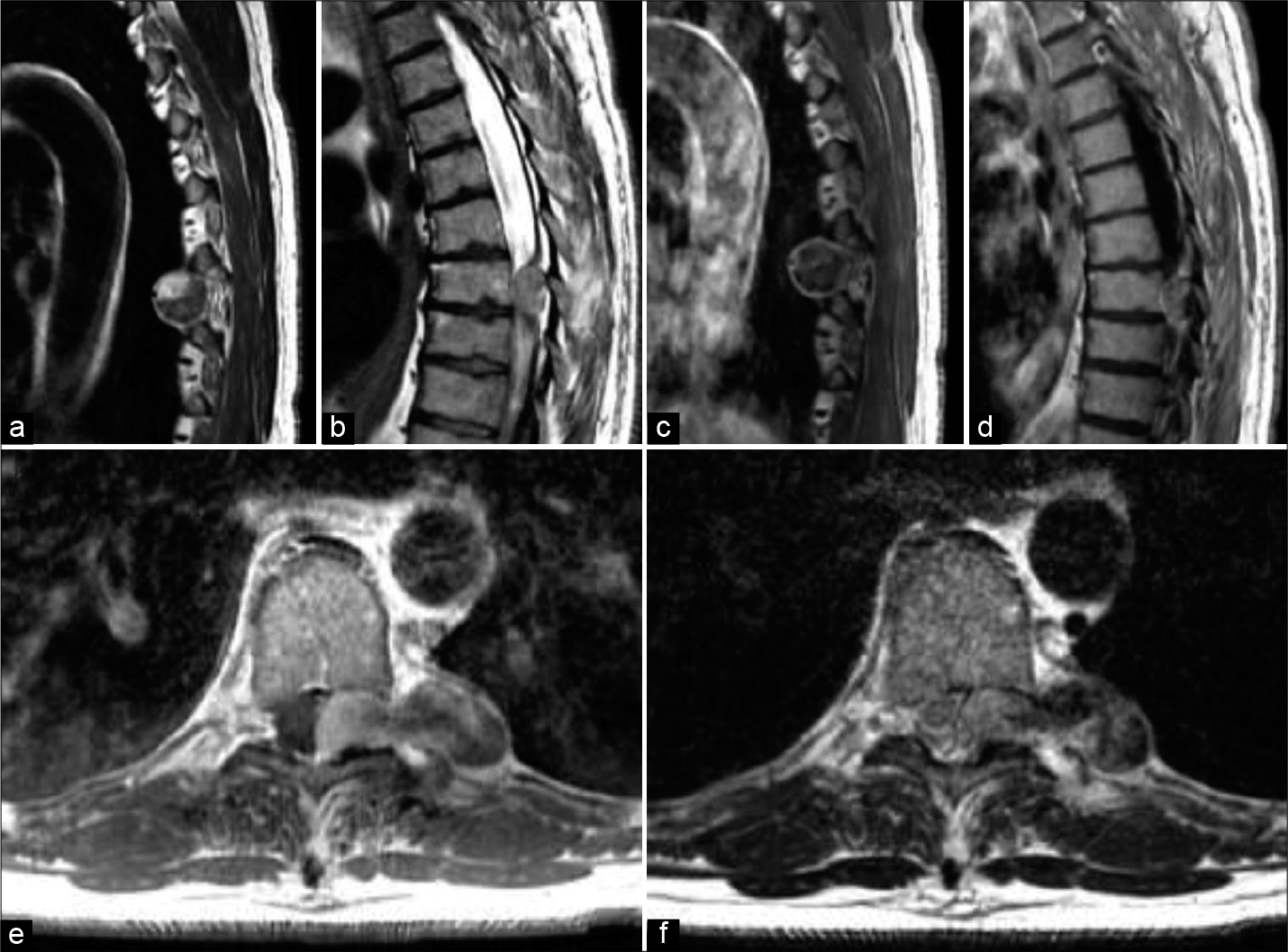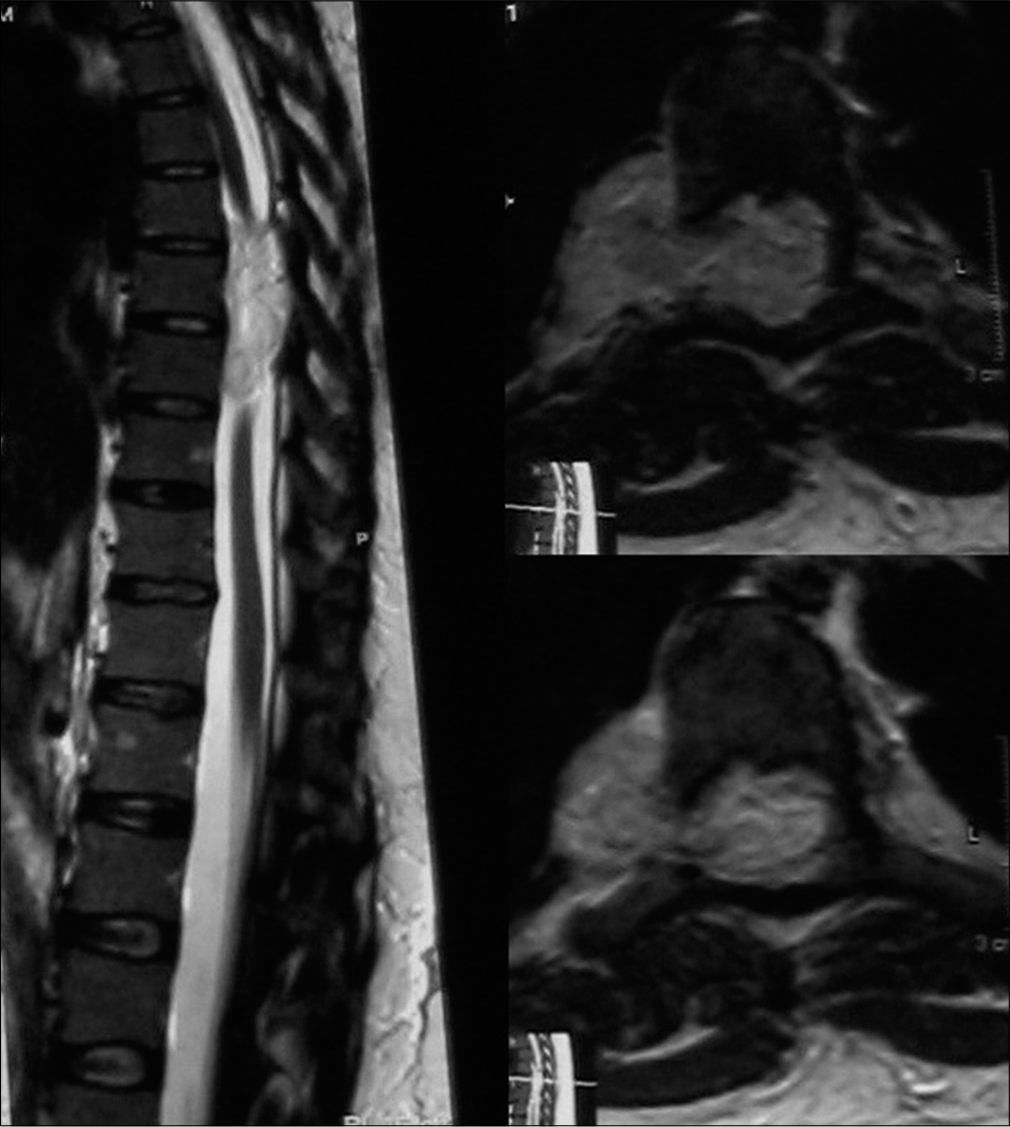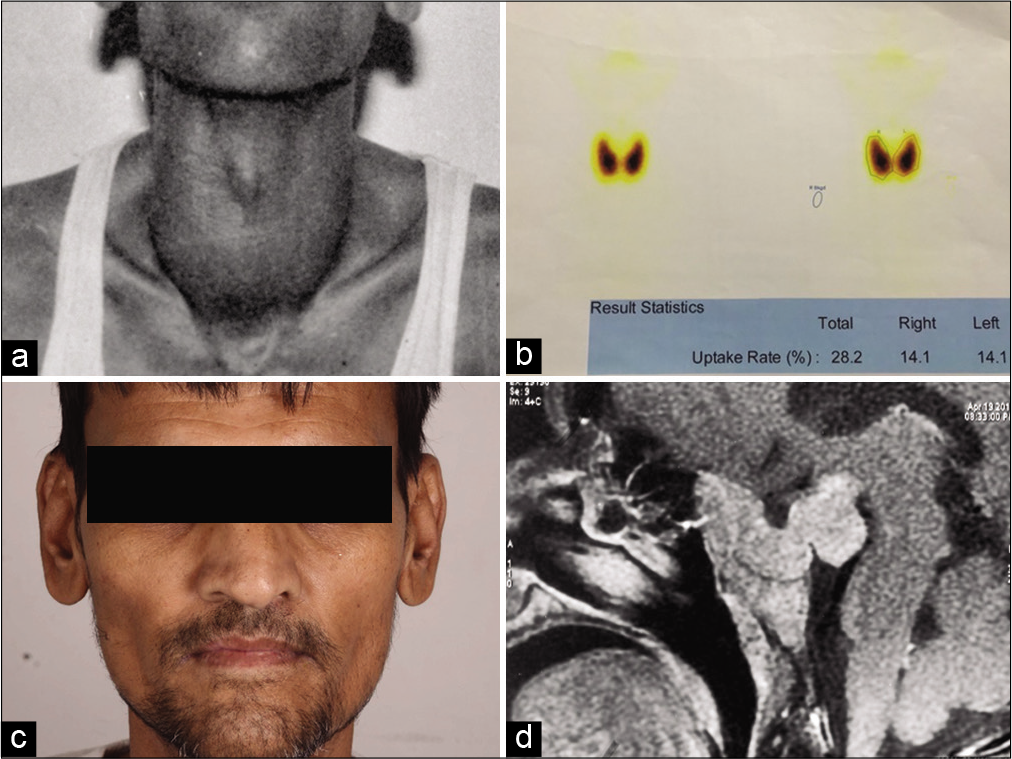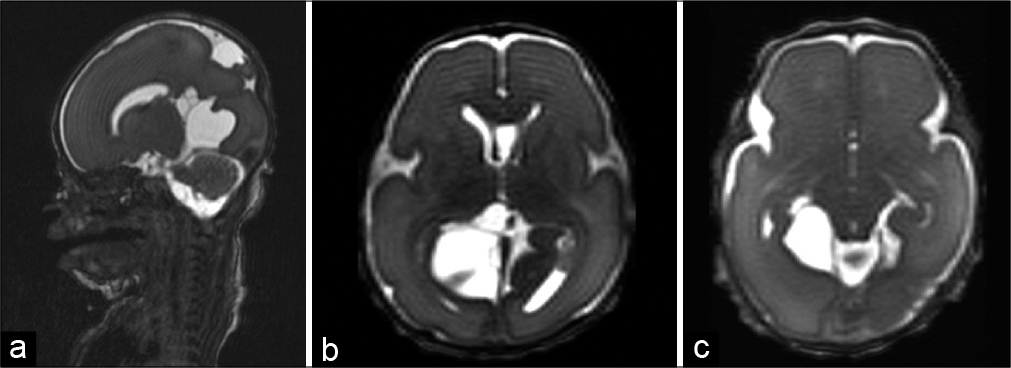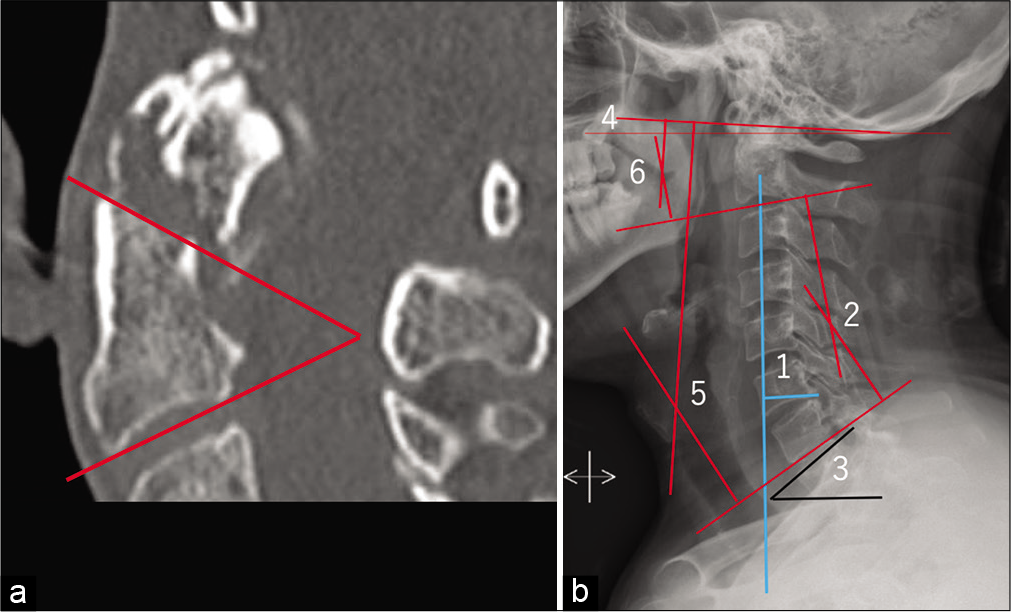Reactivation of COVID-19 in a neurosurgical patient with early neuropsychiatric presentation. Does seroconversion mean immunity?
Date of publication: 19-Apr-2021
Background: In the aftermath of COVID-19 outbreak, there is a strong need to find strategies to monitor SARSCoV-2 transmission. While the application of screening techniques plays a major role to this end, there is evidence challenging the real significance of seroconversion. We reported a case of COVID-19 reactivation associated with a neurosurgical operation with early neuropsychiatric involvement presumably promoted by olfactory and gustatory impairment in the first infection.
Pathological axis fracture secondary to a solitary bone plasmacytoma: Two cases and a literature review
Date of publication: 14-Apr-2021
Background: Solitay bone plasmocytoma (SBP) account for just 5–10% of all plasma cell neoplasms. They are infrequent in the cervical spine, especially involving the C0–C2 segment. In this article we conducted a literature review and present the diagnosis, management and long term course of two patients with SBP of C2 causing cervical instability.
Hemorrhagic spinal melanotic schwannoma presenting as acute chest pain: A case report and literature review
Date of publication: 14-Apr-2021
Background: Melanotic schwannoma (MS) is a rare variant of peripheral nerve sheath tumor. MS commonly arises along the spinal nerve sheath. Patients most often experience pain along the dermatome of the affected nerve root. Symptoms development is usually insidious. About half of MS cases are associated with Carney complex, a multi-neoplastic disorder. The remaining cases arise spontaneously. About 10–44% of these tumors undergo malignant transformation.
Dorsal epidural “Spindle Cell Lipoma” in a pregnant female
Date of publication: 14-Apr-2021
Background: Spindle cell lipoma (SCL) constitutes just 1.5% of all lipomatous tumors. They typically occur in the upper back and shoulders. Here, we report a 37-year-old female presenting with a SCL in the dorsal epidural thoracic spine, during her 9th month of pregnancy.
The outcome of TSHoma from a tertiary care institute in India
Date of publication: 14-Apr-2021
Background: Thyroid-stimulating hormone (TSH)-secreting pituitary adenoma (TSHoma) is the rarest functioning pituitary adenoma.
Intracranial arachnoid cysts in an infant: A technical note on the innovative use of navigation and flexible endoscopy for cyst fenestration
Date of publication: 14-Apr-2021
Background: Intracranial arachnoid cysts (ACs) are a cerebral spinal fluid (CSF) collection within the meninges. They typically arise during embryologic development. Some are stable overtime with little consequence, but large or growing cysts may require surgical intervention. The optimal surgical technique is debated and may be more technically challenging in the infant age group.
Strategy to reduce radiation exposure in postoperative spinal computed tomography scans
Date of publication: 14-Apr-2021
Background: When diagnosing and treating spinal disorders, spine surgeons commonly utilize computed tomography (CT) scans preoperatively, intraoperatively, and postoperatively.
Impact of the novel coronavirus disease (COVID-19) outbreak on the neurosurgery department in Chad
Date of publication: 14-Apr-2021
Relationship between odontoid fracture angle and cervical sagittal balance
Date of publication: 14-Apr-2021
Background: Fractures can occur in various locations within the odontoid process with differing orientations. However, little is known about what factors contribute to the anterior versus posterior angles/orientation of these fractures.
Commentary on Post, et al. Ultra-early tranexamic acid after subarachnoid hemorrhage: A randomized controlled trial. Lancet 2021
Date of publication: 14-Apr-2021
Background: Tranexamic acid (TA) administration in aneurysmal subarachnoid hemorrhage (SAH) within the first 24 hours may reduce the incidence of early aneurysmal rebleeding. However, this is also the potential for an increased risk of delayed cerebral ischemia if TA is administered for more than 72 hours following the initial aneurysmal rupture.


